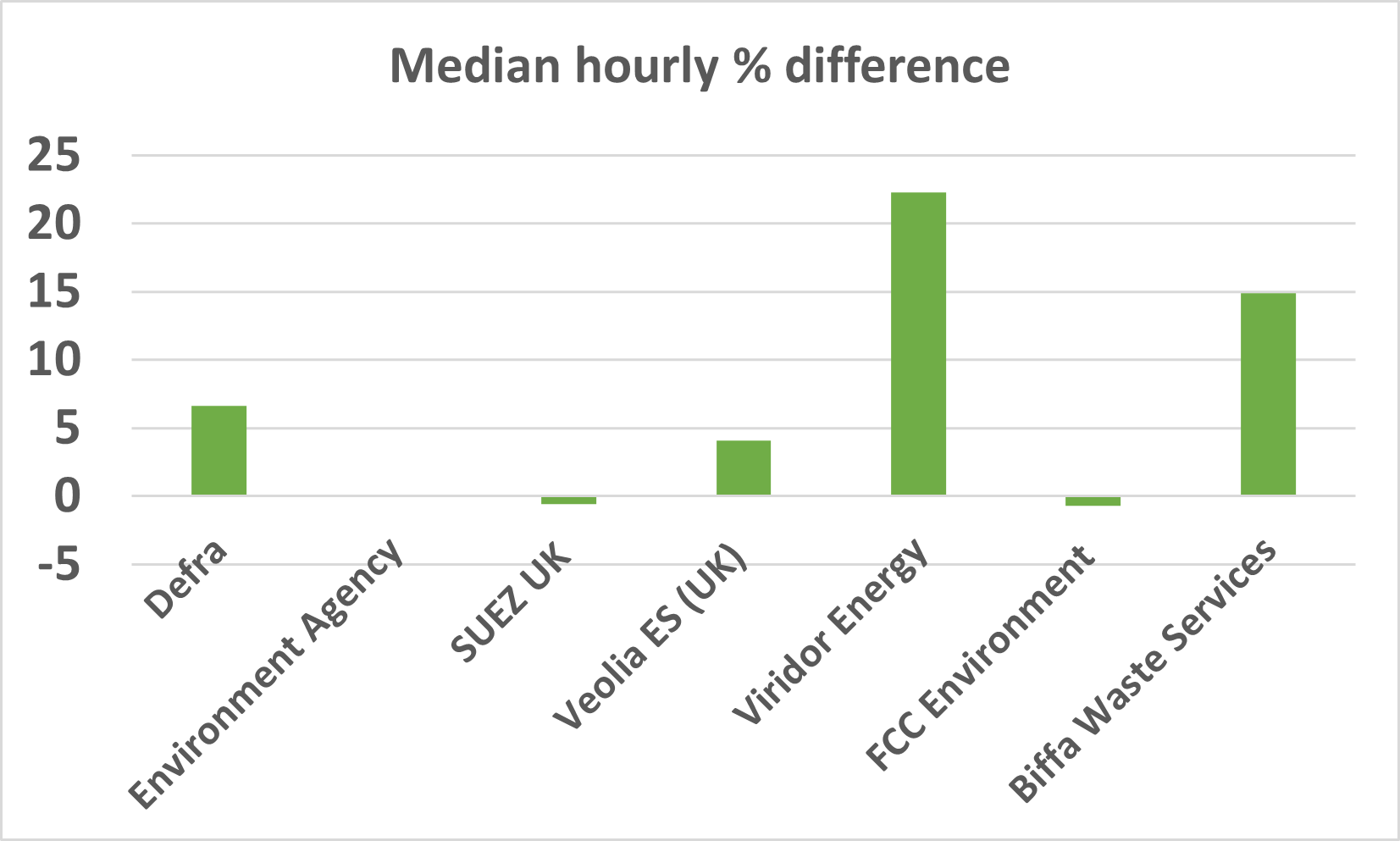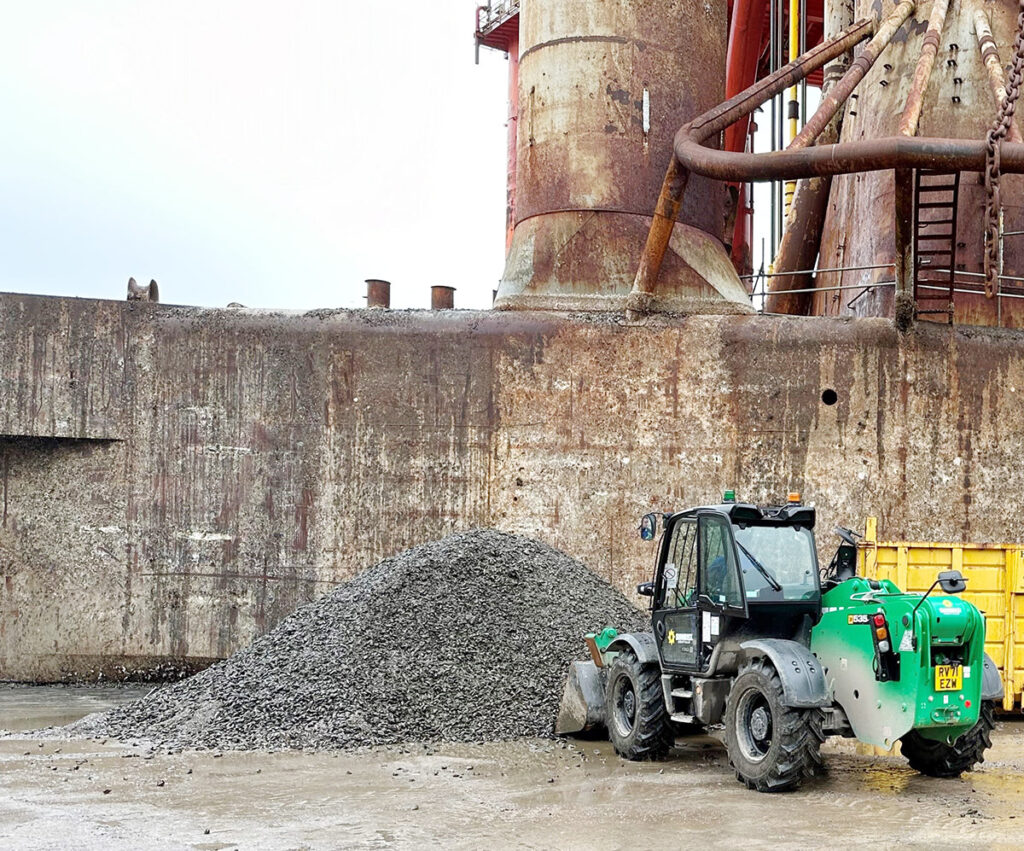From 2017, companies with more than 250 employees are required to submit their gender pay gap data using a ‘snapshot’ date of 5 April and must submit this within 12 months.
The biggest waste companies – Biffa, FCC Environment, Suez, Veolia and Viridor, as well as the Environment Agency and Defra, have all now submitted their data from the snapshot date of April 2022.
As each company has a range of subsidiaries submitting separate data, the figures look at what is understood to be the largest subsidiary company. Overall group figures may vary and those published separately by the companies are detailed at the bottom of this page.
Median
The figures provide a range of different ways of working out what a company’s ‘pay gap’ is.
The median hourly pay gap is the difference between the midpoints in the ranges of hourly earnings of men and women. This takes all salaries in the sample, lines them up in order from lowest to highest, and picks the middle salary.
As seen below, five of the seven looked at paid men more than women using this metric. The Environment Agency had an exactly even rate while FCC and Suez was slightly below.
The median hourly percentage difference is helpful as it can work out how much a woman earns for every pound of that by a man. At Defra, for example, women earn 93p for every £1 that men earn when comparing median hourly pay. Their median hourly pay is 6.6% lower than men’s.
The national average shows that women earn 85p for every £1 that men earn when comparing median hourly pay, so 15% on the above table.
Mean
Another way of looking at the data is calculating the mean percentage difference. The mean involves adding up all of the numbers and dividing the result by how many numbers were in the list.
Mean averages are useful because they place the same value on every number they use, giving a good overall indication of the gender pay gap, according to the government. However, very high or low hourly pay can ‘dominate’ and distort the figure, the government said.
This can impact some figures in the waste sector as often lower paid manual jobs are undertaken by males.
Here, the picture is more mixed. Only Viridor Energy and Defra had a significant pay gap data in favour of men, with the Agency having 0.1% in favour of men. Suez, Veolia, Biffa Waste Services and FCC are all in favour of women.
Narrative
Companies are also able to publish a supporting narrative to accompany their data.
Biffa explained in its note that the company goes beyond what is required and explained that across the Biffa group, its mean gender pay rap figure was just 2.6% in favour of men.
FCC Environment said its figures show that it has “no gap for women in our workforce because we have a high proportion of women in non-manual support, technical and managerial roles within the business. These roles are typically paid higher than male dominated manual roles.”
Suez explained that its male pay is gradually growing at a higher rate to close the gap as it is working on giving its lowest paid employees better pay.
Veolia said its group hourly mean rate, combining all of its subsidiaries, was 6.4% in favour of women, and the median was 0.59% in favour of women. Veolia also said this has been closing in recent years as it is seeking to increase pay for the lowest paid frontline employees who are generally male.
Viridor did not provided extra information on its gender pay gap.














Subscribe for free